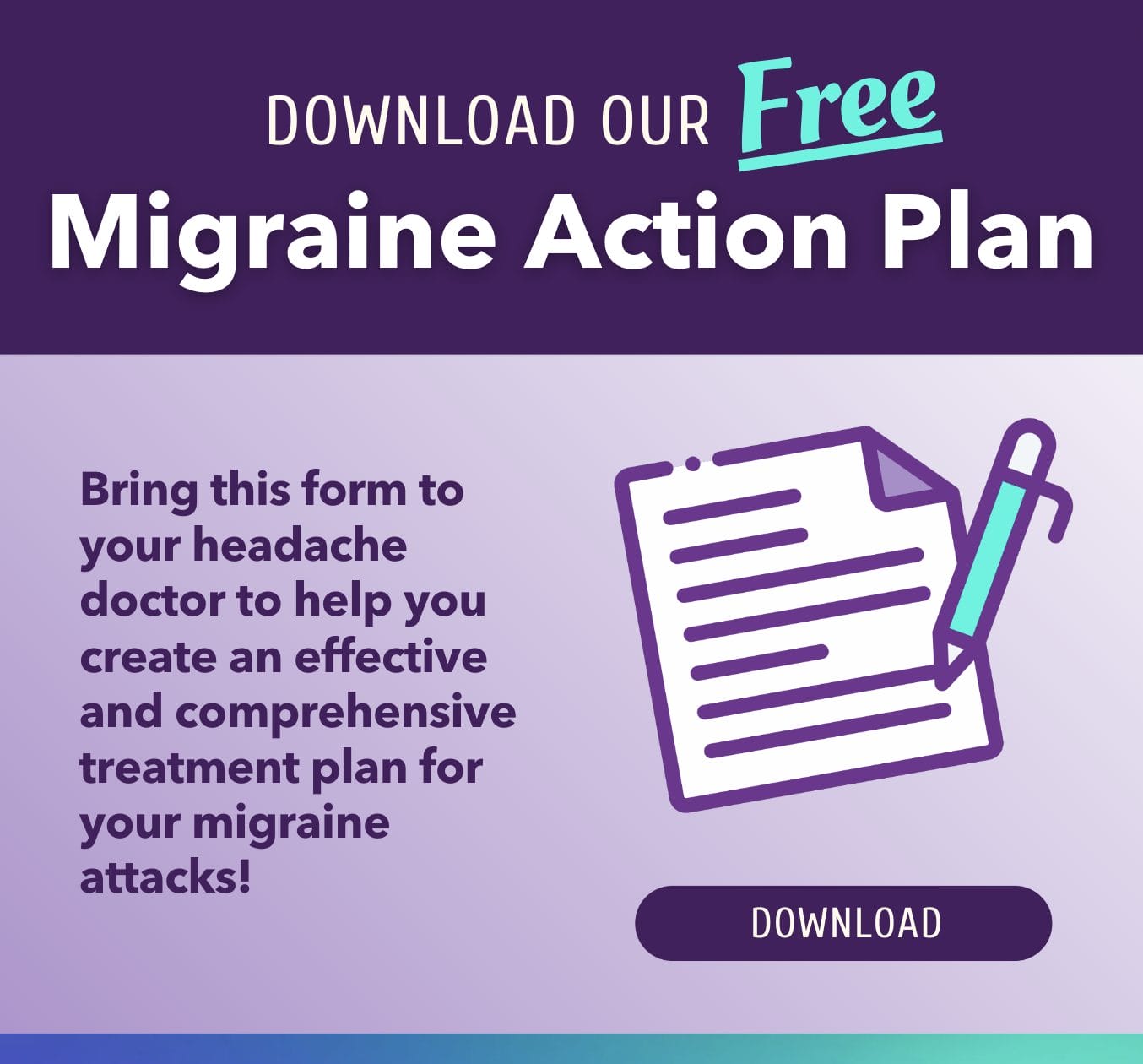Finding a medication, or combination of medications, that works for you can be challenging and may require time and patience. Below is a list of medications which are frequently prescribed for migraine. We encourage you to talk to your doctor about which ones may be appropriate to add to your treatment toolbox.
You can also learn more about the newest migraine treatments, including how they work, possible side effects, access programs and more. In addition, there are some medications currently in the clinical trials, but not yet FDA-approved.
Preventive Medications
Preventive medications are used to reduce the severity and frequency of migraine attacks, and are commonly prescribed to people who get four or more migraine days per month.
FDA Approved For Migraine
- Qulipta™ (atogepant) - oral tablet CGRP inhibitor
- Depakote® (divalproex sodium)
- Vyepti® (eptinezumab-jjmr) – monoclonal antibody CGRP inhibitor (IV infusion)
- Aimovig® (erenumab-aooe) – monoclonal antibody CGRP inhibitor (self-injection)
- Ajovy® (fremanezumab-vfrm) – monoclonal antibody CGRP inhibitor (self-injection). FDA-approved for adults and children ages 12-17
- Emgality® (galcanezumab-gnlm) – monoclonal antibody CGRP inhibitor (self-injection)
- Botox® (onabotulinum toxinA injection)
- Inderal® (propanolol)
- Nurtec® ODT (rimegepant) – oral tablet CGRP inhibitor
- Blocadren® (timolol maleate)
- Topamax®, Trokendi XR®, Quedexy® XR, Eprontia™ (topiramate)
Evidence-Based Off-Label
- ACE Inhibitors (e.g.: benazepril, fosinopril sodium)
- Alpha-2 Agonists (e.g.: clonidine)
- Alzheimers medications (e.g.: memantine)
- Angiotensin II Receptor Blockers (e.g.: candesartan)
- Antihistamines (e.g.: cyproheptadine)
- Beta Blockers (e.g.: metoprolol, nadolol)
- Calcium Channel blockers (e.g.: diltiazem, felodipine)
- Cox-2 Enzyme Inhibitors (e.g.: celecoxib)
- Leukotriene blockers (e.g.: montelukast, zafirlukast)
- Muscle relaxers (e.g.: carisoprodol, tizanidine)
- Neuronal stabilizing agents, anticonvulsants (e.g.: gabapentin, zonisamide, lamotrigine)
- SSRIs, SNRIs & MAOIs (e.g.: escitalopram, venlafaxine)
- Tricyclic Antidepressants (e.g.: nortriptyline, amitriptyline)
- Triptans sometimes used as preventives for menstrual migraine (e.g.: frovatriptan, naratriptan)
Acute/Abortive Medications
These treatments work to stop the migraine attack itself with its associated symptoms. Too frequent use of some of these can cause rebound headaches or medication overuse headache (MOH) for some people, so it’s important to follow your doctor’s directions for use.
Gepants
Gepants are a new class of migraine medication which are small molecule CGRP inhibitors/antagonists.
- Nurtec® ODT (rimegepant) —oral dissolving tablet, CGRP receptor-antagonist
- Ubrelvy® (ubrogepant) —oral tablet, CGRP receptor-antagonist
- Zavzpret™ (zavegepant) —nasal spray, CGRP receptor-antagonist
Ditans
Ditans are a new class of migraine medication which are 5-HT1F receptor agonists that act on the trigeminal system without causing vasoconstriction.
- Reyvow® (lasmiditan) —oral tablet, 5-HT1F receptor agonist
Triptans
- Axert® (almotriptan)
- Relpax® (eletriptan)
- Frova® (frovatriptan)
- Amerge® (naratriptan)
- Maxalt® (rizatriptan) —available in USA as oral tablet, oral dissolving tablet
- Symbravo® (rizatriptan with meloxicam) —available in the USA summer 2025
- Zembrace®, Tosymra®, Imitrex®, Onzetra® (sumatriptan) –available in USA as tablet, nasal spray, injection
- Treximet® (sumatriptan with naproxen sodium)
- Zomig® (zolmitriptan) —available in USA as oral tablet, oral dissolving tablet, nasal spray
Ergotamines:
- Migranal®, Trudhesa™ (dihydroergotamine nasal spray)
- DHE-45®, Brekiya™ (dihydroergotamine subcutaneous injection)
Anti-Emetics (anti-nausea)
- Zofran® (ondansetron)
- Reglan® (metoclopramide)
- Compazine® (prochlorperazine)
- Phenergan® (promethazine)
Muscle Relaxants
- Soma® (carisoprodol)
- Flexeril® (cyclobenzaprine)
- Zanaflex® (Tizanidine)
Prescription Strength NSAIDs
- ELYXYB™) (celecoxib)
- Cambia® (diclofenac potassium)
- Indocin® (indomethacin)
- Toradol®, Sprix® (ketorolac tromethamine) – options include tablet, nasal spray, injection, IV
Butalbital compounds
- Fioricet® (butalbital, acetaminophen & caffeine)
- Fiorinal® (butalbital, aspirin & caffeine)
Last Resort/Rescue Treatments
Last resort "rescue" treatments are those that can be utilized if abortives fail OR if you can’t take abortives for medical reasons. Some of these rescue options may only be available to you in your doctor's office, urgent care, or the emergency room. In addition, some of these may only temporarily “mask” migraine symptoms, only to wear off subsequently with the symptoms returning.
Corticosteroids
- Medrol®, Solu-Medrol®, Prednisone, Deltasone®, Prednisone Intensol®
- Methylprednisolone, Depo-Medrol®
Ketamine
- IV infusion
- Nasal spray (compounded)
Nerve Blocks
May be used to abort an intractable migraine, or as a chronic migraine preventive. Nerves targeted include:
- Auriculotemporal
- Occipital
- Supraorbital
- Trigeminal
- Sphenopalatine ganglion
IV "Cocktails
Various medications may be combined "in office" or in the ER to stop a migraine attack.
Download the Migraine Treatment Toolbox
Bring it to your next doctor's appointment and ask your doctor which options would be good to add to your personal migraine treatment toolbox.

